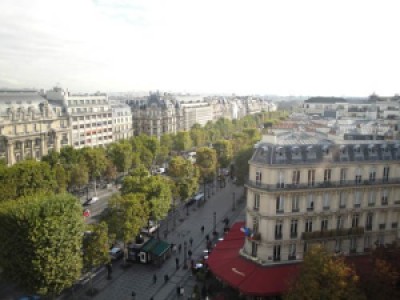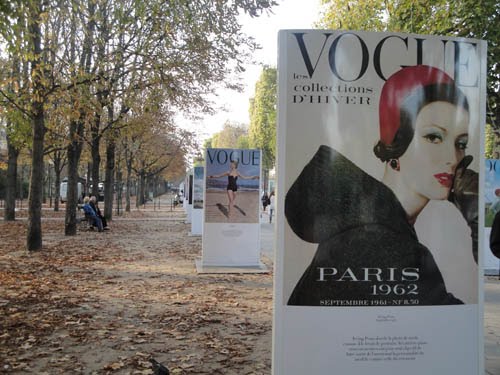This year marks 100 years since American soldiers entered World War I, aiding their French allies in winning the war. To commemorate the Centennial of the Great War, I recently joined Atout France for a trip to the Lorraine and Meuse regions of France, the setting for many hard fought battles. Our journey began at the train station in the city of Metz. The Neo-Roman architecture is one example of the power during the German empire.

From here we discovered the Centre Pompidou-Metz, a modern contrast to this medieval Gallo-Roman city which includes Saint Etienne Cathedral with stained glass windows by Marc Chagall and the Porte des Allemands (German Door). The latter was named for the Teutonic Knights who founded a hospital nearby in the 13th century.

From Metz we drove 80 kilometers to Verdun in the Meuse Argonne region, where I enjoyed a room with a view of the city at hotel Les Jardins du Mess, not to mention a decadent dinner. In the morning it was time to explore.

The first stop in discovering exactly how grueling life was for the soldiers during the Great War was at Butte de Vauquois. It is here that mine warfare created massive craters in the land, beneath which German soldiers built a network of galleries. Soldiers often spent entire weeks within these dark, damp tunnels. Hard to fathom.

Our next stop was to Romagne ’14-’18, a museum created through 30 years of collecting wartime objects within the woods around Romagne-sous-Montfaucon. This is the life work of Jean-Paul de Vries, a man with many a tale to tell. Collections of grenades, rifles and helmets to items including combs, forks, watches, shoes and love letters, tell the story of the soldiers’ everyday life.


American soldiers officially entered the war on April 6th 1917, mobilizing over 4 million able-bodied men. This followed their two years of aiding injured French soldiers as ambulance drivers. Victory with the aid of American soldiers in 1918, ended the mine warfare in Verdun. The American Monument at Montfaucon d’Argonne is one of many testaments to America’s loyalty to France. This 60-meter high monument commemorating American victory in the Meuse-Argonne Offensive, faces the front line of the American First Army on the morning of September 26, 1918, the start of the offensive.

To commemorate the 14,246 American soldiers who lost their lives during World War I, we spent a solemn evening at the Meuse-Argonne American Cemetery. It was November 11th 2017, and the largest American graveyard in Europe held a ceremony with 3,000 candles in remembrance of these soldiers. I will never forget this deeply touching experience. Next year for the Centennial on September 23, 2018, one candle will be lit for every soldier who fought alongside the French. This event will honor the promise made by General Pershing: “Time will not dim the glory of their deeds”.

That night we found refuge at Hostellerie du Château des Monthairons, a family-run castle that once served as as a hospital for US troops in 1915. The perfect place to reflect.

The following day began at the Battlefield of Verdun, the setting for the most intense warfare that took place during WWI. This French and German battlefield remained in French hands, but not without horrific losses of life from both sides. The Battle of Verdun in 1916 lasted 300 days and 300 nights with non-stop fighting. Tragically, more than 300,000 soldiers died or were considered missing, with over 400,000 French and German soldiers wounded. A visit to Verdun might be the only way to truly comprehend this unprecedented loss of life from both sides.

The Ossuary is one of the national French memorials to the First World War, and a remarkable tribute to brave men. Here the remains of 130,000 unknown soldiers are laid to rest. Whether from the German or French side, these soldiers are united as men who lost the battle for their lives.


Nearby Fort Vaux is a symbol of French heroism. It was here that Major Sylvain-Eugene Raynal, after running out of water, medical supplies and food for his men, sent several messages via homing pigeons. It was his last pigeon that brought relief for his soldiers. This pigeon named Le Vaillant, released from Fort Vaux on June 4, 1916, was awarded the Order of the Nation. A feat worth the honor!

The Verdun Memorial provides a comprehensive history lesson on the Battle of Verdun. You are greeted by the image of a Verdun soldier, unaware whether he is French or German. This recently renovated museum is filled with original photographs, bone-chilling eyewitness accounts, and 2,000 wartime items. Personal items include crafts made by the soldiers during many idle hours, and letters sent home to worried families.
This journey through the Lorraine and Meuse regions presents both a history lesson and brings us closer to the heroism and tragedies of all these young soldiers, regardless of the borders that defined them. A journey worth taking for all of us, especially for the Centennial of World War I.


















































































































































































































































































































































